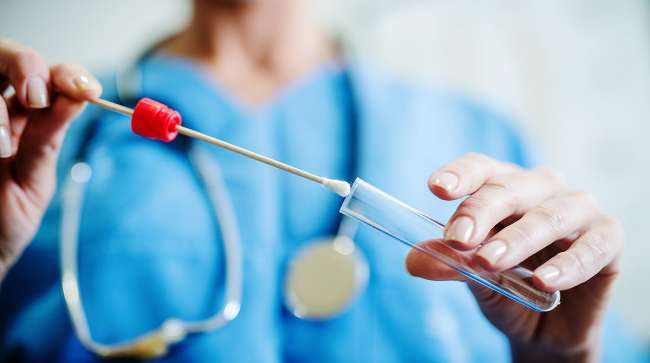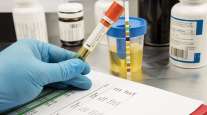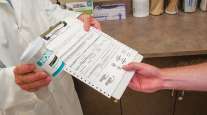Senior Reporter
HHS Establishes Guidelines for Oral-Fluid Specimen Drug Testing

[Stay on top of transportation news: Get TTNews in your inbox.]
The Department of Health and Human Services has established scientific and technical guidelines for the inclusion of oral fluid specimens for use in the Mandatory Guidelines for Federal Workplace Drug Testing Programs.
“In addition, some agencies, such as the Department of Transportation, are required to follow the guidelines in developing drug-testing programs for their regulated industries,” the rule said.
The rule, published in the Federal Register on Oct. 25, goes into effect Jan. 1, but will require DOT to go through the rulemaking process to establish use of the less invasive alternative method to test truck drivers and other DOT employees.
With the adoption of the new guidelines, motor carriers will be permitted to use either the oral fluid or urine samples for new employee drug tests or random tests for existing employees, said Abigail Potter, manager of safety and occupational health policy for American Trucking Associations.
HHS-2019-22684 by Transport Topics on Scribd
The new oral fluid guidelines, which have been years in the making, will allow federal executive branch agencies to collect and test oral fluid specimens as part of their drug-testing programs. The new guidelines will provide flexibility for federal agency workplace drug-testing programs to address testing needs and revise the requirement to collect only a urine specimen, which has existed since the guidelines were first published in 1988.
“The one benefit that the oral fluid testing does provide is that it’s an observed collection process,” Potter said. “So it’s very hard for an individual to adulterate or substitute a specimen.”
Plus, Potter said oral fluid is “perfectly situated” for testing recent drug use by an employee and would therefore offer an advantage for use in a post-incident test. It also would offer drug use detection immediately at roadside, she said.
“The one good thing about this test getting the federal government seal of approval is that we hope to see that this starts getting used by states in dealing with roadside impairment issues,” Potter said. “This is another way of trying to move away from blood testing. It will test the same drugs as a urinalysis test — the exact same panel.”
“Overall, this is an exciting turn of events for the industry,” said Albert Berger, CEO of Confirm BioSciences, a San Diego-based provider of instant and lab-based drug tests. “This is something that people in the industry have been tracking and monitoring for several years.”
The use of an oral fluid test would be more for determining if an individual is presently impaired, since the period of detection would be from hours up to two days, as opposed to a two- to seven-day window with a traditional urine-based test, Berger said.
“The second advantage of the test is the privacy of collection,” Berger added. “If you can imagine the way the urine-based test is collected presents a host of issues for the collector and the actual person providing the collection. Much of that awkwardness is taken out of the picture when you are utilizing an oral fluid-based test, which allows the person to perform it right in front of you. It’s not gender-based, and it makes for a much more dignified experience.”
Berger said it’s important to note that the oral test isn’t designed to replace a urine test; it’s an alternative way to test.
HHS said oral fluid tests generally are positive as soon as the drug is absorbed into the body, valuable in offering an employer in situations where drug use at the worksite is suspected and may indicate “recent administration of the drug and be advantageous when assessing whether the drug contributed to an observed behavior.”
The agency said the transition to oral fluid testing is expected to be gradual and steady over the course of four years, when it should plateau to account for 25% to 30% of federal agency drug testing.
“The menu is ever-expanding with oral fluids,” Berger said. “Obviously, urine-based tests have been in existence for many years. … Ultimately, oral fluids will be able to offer comparable menus.”
Want more news? Listen to today's daily briefing:




